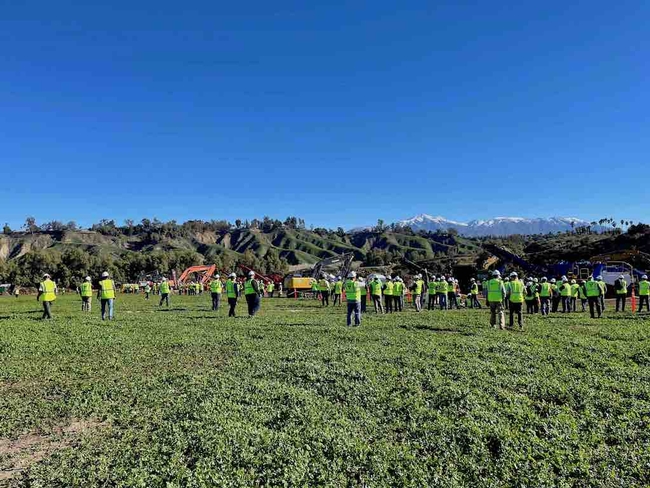In my previous blog, I gave an overview of the first two days of COMPOST2023. The event, hosted by the The US Composting Council in January, was an outstanding learning and networking experience. In Part 2, I'm excited to discuss the rest of the event, including the conference sessions at the Ontario Convention Center and Demo Day at One Stop Landscape Supply.
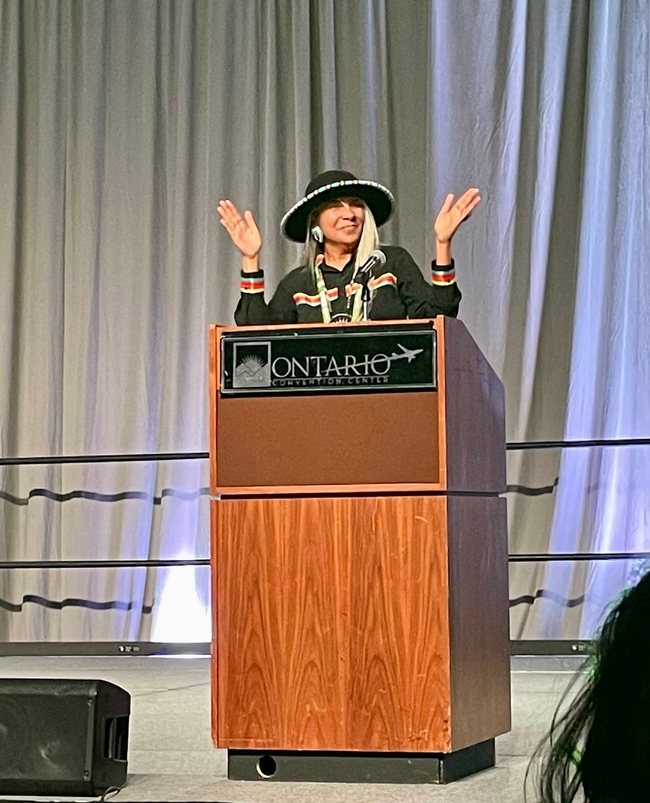
After the keynote, I wandered over to the Exhibit Hall, eager to check out the vendors and information tables. Major equipment vendors such as Komptech and Ecoverse showcased their massive composting machines, while product manufacturers offered samples of compostable bags and utensils. One of the biggest trends was biochar—a carbon-rich, charcoal-like substance created by burning organic material without oxygen. It was interesting to see that even pistachio shells can be used to produce this substance! When blended with compost, biochar enriches the soil by increasing its moisture retention, nutrient content, and microbial activity.
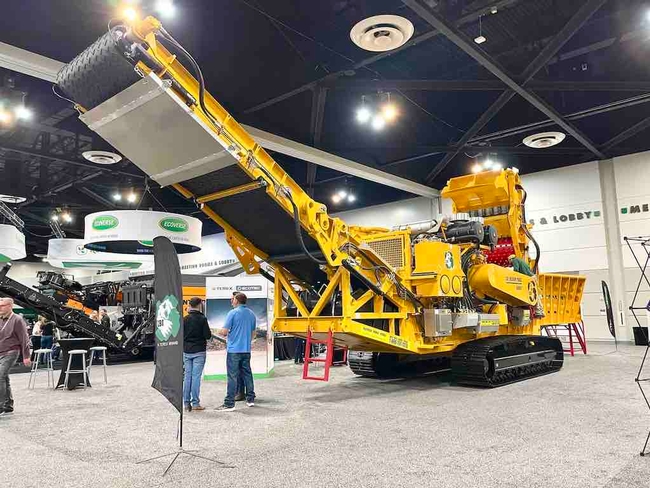
The final presentation I attended on opening day was “Healthy Soils for Healthy Parks: Los Angeles Urban Carbon Farm at Griffith Park” by Lynn Fang, a well-known educator and researcher in composting systems and soil science. LA Compost recently established its first park-based compost site at Griffith Park, using food waste collected from local farmers market drop-offs. Lynn's presentation highlighted a demonstration project of the Healthy Soils for Healthy Communities Initiative, led by TreePeople in partnership with LA Parks and Recreation, Kiss the Ground, and LA Compost, to promote regenerative park management. The study site was a flat, grassy area south of Crystal Springs, where individual plots were treated with mulch from Griffith Park, compost from LA Compost, or no amendment as a control. After 9 months, the researchers found that mulch and compost increased the activity of soil organisms and the percentage of soil organic carbon.
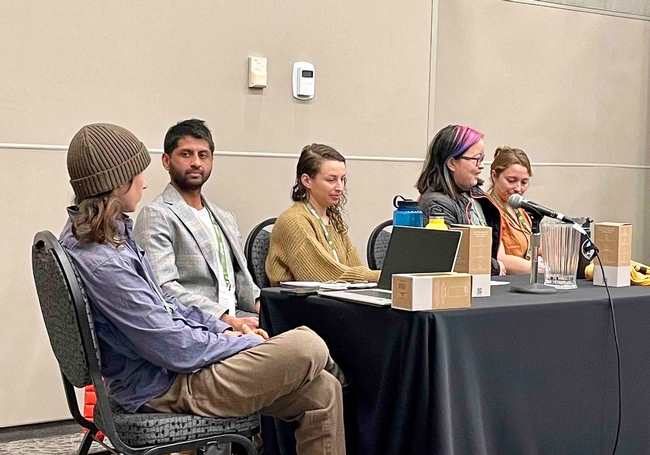
Other panelists showed how technology can facilitate community composting. Tess Feigenbaum, the Cofounder and Operations Director at Epic Renewal in Rhode Island, announced plans to release a mobile application to help with compost site management, process tracking, data collection, and environmental impact reporting. Sashti Balasundaram, the Founder and CEO of WeRadiate, is leading the development of smart sensors for compost piles, which measure temperature and moisture with remote, real-time monitoring.
The final panelist to speak was Elinor Crescenzi, who shared data on the 31 Community Composting for Green Spaces (CCGS) sites in the Inland Empire. Despite a modest $224K budget for labor and infrastructure, these sites managed to divert about 510K lbs of food scraps and 3.7M lbs of organic material from landfills, resulting in emissions reductions equivalent to 908 metric tons of carbon dioxide. That's similar to taking 200 vehicles off the road for one year! In addition to the environmental impacts, the CCGS program also had significant community and social impacts, such as increasing healthy food access, community engagement and education, social support networks, and psychological well-being. Ninety percent of the sites are growing food in addition to making compost.
Another interesting session was “Compost Market Dynamics in California”. One of the speakers was Jeff Ziegenbein, the site manager of the largest indoor compost facility in North America, the Inland Empire Regional Composting Facility (IERCF). Located in Rancho Cucamonga, the facility produces over 200K cubic yards of compost annually from recycled wood and green waste, biosolids, and horse stable bedding using the Aerated Static Pile process. The composting area is completely enclosed to meet air quality regulations. The filtering system does such a good job at odor control I didn't even know this facility is literally in my backyard. The compost, marketed under the SoilPro brand, is used in a variety of applications, including landscaping, horticulture, turf management, agriculture, and roadways.
After attending the morning sessions, I returned to the Exhibit Hall for some Q&A with the finalists of the Emerging Composter Competition. The first place winner was Greg Mankowski of Evolve Pet Composting Services and Consultation in Michigan. His business is very timely, as more and more states, including California, are passing laws to allow human composting. Second place was Justin Brann of Crystal Coast Compost in North Carolina, who composts food waste from many sources, including residences, businesses, farmers markets, and events. Third place was Jameson Meyst of Juicycles, who collects unpicked fruit from San Diego orchards, juices it onsite, and distributes juice and fruit popsicles to the community while composting the remaining waste.
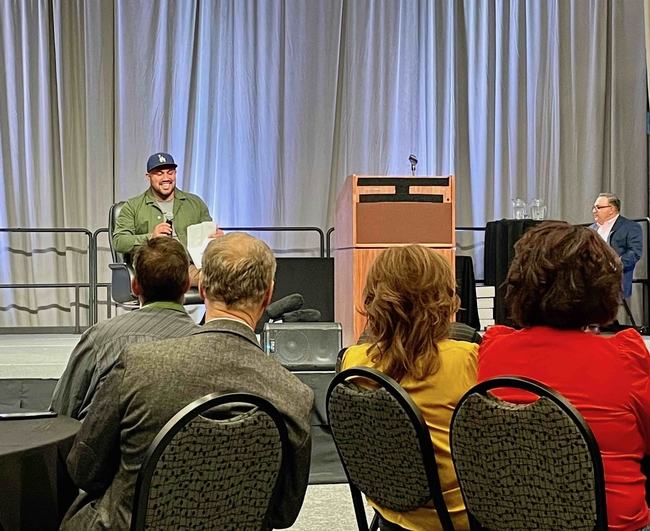
My favorite day of COMPOST2023 was Demo Day, which took place at One Stop Landscaping Supply in Redlands. The place is huge, making it the perfect setting for demonstrations of large-scale composting equipment. As a volunteer, my day started early to direct traffic to the parking area and hand out safety gear to the attendees.
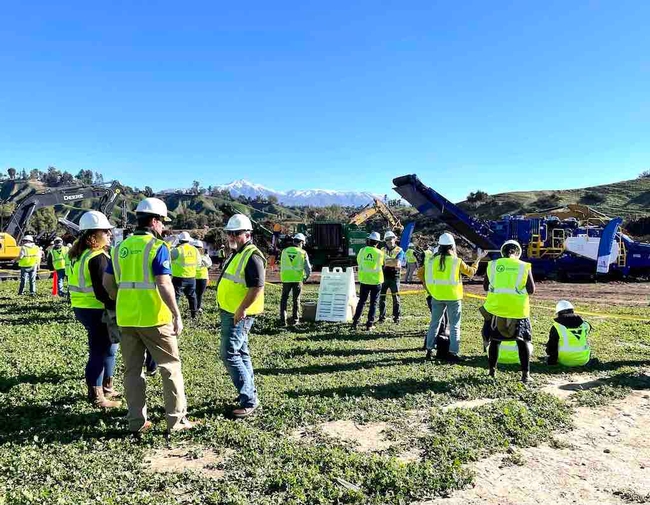
Despite the loud noise of the equipment, the wild burros grazing around the parking lot seemed unfazed. Having only heard about herds of burros roaming San Timoteo Canyon, I was thrilled to see them up close. Although they were quite shy and wandered away when approached, many drivers stopped to snap some photos before heading out.
If this blog has piqued your interest in COMPOST2023, you can find the recordings at Compost University on the US Composting Council website. I'm already looking forward to next year's conference at the Ocean Center Convention Center in Dayton Beach, Florida from February 6th to 9th. The theme of COMPOST2024 is “Making Waves”, which is fitting given the impact composting is sure to have for years to come.
If you want to learn more about composting, check out the videos on our UCCE San Bernardino YouTube channel or contact the Master Gardener Helpline at mgsanbern@ucanr.edu or (909) 387-2182.
Have you enjoyed reading this blog? Do you have questions? Need help with school gardens or environmental education? Feel free to contact me at dschnur@ucanr.edu. I look forward to hearing from you.
Attached Images:
